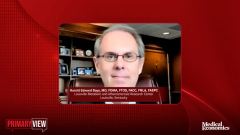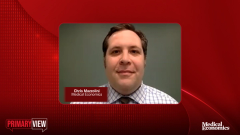
Treatments to help patients manage body weight
An overview of treatment opportunities available for patients who are overweight or obese, and recommendations for progressing to treatment options beyond diet and exercise.
Episodes in this series

Chris Mazzolini: Dr. Bays, let’s walk through the standard of care. What is the current standard of care in helping patients manage their weight?
Harold Edward Bays, M.D., FOMA, FTOS, FACC, FNLA, FASPC: If I had to take put it succinctly, obviously, that would be a three-day symposium. I’m not sure we’re going to be able to cover all those topics, but if I had to boil it down, it would be this: I think the primary standard of care for patients with obesity is that we focus on the health of the patient and not solely the weight of the patient. I think if people could remember that they’d go a long way in terms of improving the health of our patients. For example, you have a patient with obesity, but he/she has the diabetes, hypertension and dyslipidemia. Obviously, it’s standard of care that you want to manage those things. If the patient happens to have obesity-related-depression, or perhaps the sleep apnea that we talked about, or maybe have orthopedic problems, yet again, standard of care would be to concomitantly address these issues. I think the standard of care is mainly to look at the patient from a global standpoint, and to not single out the body weight and say, “That’s all we’re going to focus on.” As for everything else, we’re going to set that aside, and we don’t do that for any other kind of patients. We shouldn’t be doing that for obesity. Obesity is a disease. It needs to be managed in a multifactorial way, and in a multidisciplinary way.
Chris Mazzolini: Dr. Christofides, to add to what Dr. Bays just said, we all know that diet and exercise are always the first step for patients. I’m wondering, when do you move on from diet, exercise and maintaining a healthy weight, to some of the other treatments, such as weight loss surgery, pharmacotherapy, devices and things like that? How do you make that decision on when it’s the right time to move beyond diet and exercise?
Elena A. Christofides, M.D., FACE: It’s a great point, Chris. I want to make something clear. I think Dr. Bays was getting at it in his answer. Every person in the United States who has a problem with overweight or obesity knows that they have a problem with overweight or obesity, or they are simply uneducated about the consequences. Diet, exercise and lifestyle, is everywhere. It’s free. There’s lots of advice out there. There are a lot of different plans. Globally speaking, the most important aspect of when to move on is to recognize that every patient who comes to the medical professional for care must be educated about their options for medical management and surgery. In my setting, in my practice, the Mt. Carmel Hospitals in Columbus, Ohio, and in my educational component with my students, they have to offer that at every opportunity because the biggest problem with treating overweight and obesity is the stigma — societally, as well as in the medical profession. The disproportionate attitude that it’s a moral failing of the patient, who isn’t adequately successful with diet and exercise, and doesn’t deserve medical management or surgical management is one of my pet peeves. You don’t tell a lung cancer patient, “I’m not going to treat your lung cancer until you quit smoking.” You don’t do that. You treat them, and you give them guidance or tools to help them quit smoking to make their medical management, and chemotherapy, or whatever, more successful. I believe that the standard of care is to have a conversation with the patient globally, and to offer them medical management at every step and opportunity while you’re discussing appropriate diet and exercise in global attention to their medical needs. It’s appropriate to offer device opportunities and surgical opportunities when a patient may meet criteria, or if the patient has been unsuccessful in their goals with lifestyle management and medical management. You may use both of those as “stepping stones” in the direction of getting the patient to surgery, if their obesity classifications are much higher. If you have obesity classifications of 3 or 4, or BMIs [body mass index] of 50 or greater, for instance, you may need surgical intervention or device intervention to get the patient back to a healthy weight. Therefore, you know that lifestyle and medical management may be insufficient long-term to either get them there or maintain weight. The standard of care, when you do medical and when you do a device, should be a conversation you have with the patient every step of the way while you're managing and addressing an overweight and obese patient's needs because these are part of the informed consent conversations that patients need to be aware of. “You have this now. These are the treatments that we recommend now. These are the options down the road. This is the potential that may happen.”
Transcript edited for clarity.
Newsletter
Stay informed and empowered with Medical Economics enewsletter, delivering expert insights, financial strategies, practice management tips and technology trends — tailored for today’s physicians.







